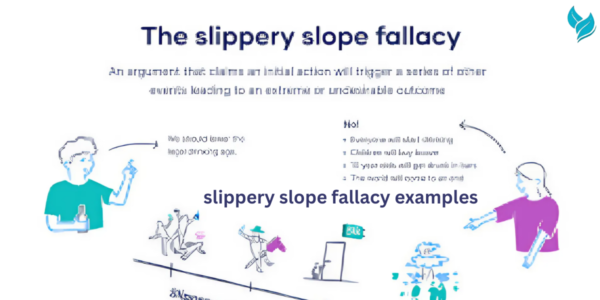In discussions, debates, or arguments, it’s not uncommon for things to get heated. When this happens, some individuals may resort to a tactic known as the ad hominem fallacy. Instead of addressing the argument or issue at hand, a person makes personal attacks against the character or traits of their opponent. Understanding how ad hominem arguments work can help you spot flawed reasoning. In this article, we’ll explore ad hominem examples, explain the types of ad hominem arguments, and provide tips on how to counter them.
What is an Ad Hominem Fallacy?
The term “ad hominem” is derived from Latin, meaning “to the person.” Instead of focusing on the argument, this fallacy targets the individual making the argument, suggesting that a personal flaw or irrelevant characteristic undermines their position. Ad hominem fallacies are often used in both casual conversations and formal debates as a tactic to distract from the core issue.
Types of Ad Hominem Arguments
Understanding the different types of ad hominem fallacies can help you identify and avoid them in discussions. Here are the main categories:
Abusive Ad Hominem
This is the most common type of ad hominem fallacy, where a person attacks their opponent’s character, intelligence, or morality. Instead of addressing the actual argument, the individual hurls insults, aiming to discredit their opponent by casting doubt on their credibility.
Example:
Person A: “We should consider investing in renewable energy to reduce carbon emissions.”
Person B: “Why should we listen to you? You barely passed science class in high school.”
Circumstantial Ad Hominem
In this form, an argument is dismissed based on the person’s circumstances or perceived biases. It suggests that the individual’s background, affiliations, or personal situation makes their argument invalid.
Example:
Person A: “I think the new policy will benefit lower-income families.”
Person B: “Of course, you would say that. You’re from a low-income family yourself.”
Tu Quoque (You Too)
The tu quoque fallacy occurs when someone responds to criticism by pointing out hypocrisy, suggesting that the opponent’s argument is invalid because they don’t practice what they preach.
Example:
Person A: “Smoking is harmful, and you should quit.”
Person B: “Why should I listen to you? You smoked for years before quitting.”
Guilt by Association
This type of ad hominem fallacy occurs when someone’s argument is attacked by associating them with a person, group, or idea that is considered undesirable, instead of addressing the actual argument.
Example:
Person A: “We should focus on community policing.”
Person B: “You sound like those radical activists who cause chaos.”
Ad Hominem Examples in Everyday Life
Ad hominem attacks are not just confined to political debates or online arguments. You can encounter them in your everyday life, whether at work, in relationships, or in casual discussions. Let’s look at some real-world ad hominem examples:
Workplace Arguments
In professional environments, people often face disagreements regarding policies, strategies, or performance. Instead of focusing on constructive criticism, some individuals resort to personal attacks to gain the upper hand.
Example:
Employee A: “I think we should reconsider the new marketing strategy.”
Employee B: “You’re only saying that because you’ve never liked anything the marketing department does.”
Political Debates
Politics is notorious for its use of ad hominem fallacies. Politicians often attack their opponents’ character or background to divert attention from the actual issue being debated.
Example:
Candidate A: “I propose a new healthcare plan to make coverage more affordable.”
Candidate B: “Why should we listen to you? You’ve never had to worry about healthcare in your life.”
Online Discussions and Social Media
In the age of social media, it’s common to see heated discussions that quickly devolve into personal attacks. Instead of engaging with opposing viewpoints, many users resort to ad hominem arguments to dismiss others’ perspectives.
Example:
Person A: “I think climate change is a serious issue we need to address.”
Person B: “You’re just another brainwashed liberal who believes everything you see in the media.”
How to Respond to Ad Hominem Attacks
Now that you can identify ad hominem arguments, it’s important to know how to respond to them effectively. Here are some tips for handling personal attacks in debates or discussions:
Stay Calm and Focus on the Argument
Don’t let personal attacks throw you off course. Stay calm and redirect the conversation back to the topic at hand. Politely point out that the attack is irrelevant to the discussion.
Example:
“You’re attacking my character, but that doesn’t change the validity of my argument. Let’s focus on the facts.”
Point Out the Fallacy
It can be helpful to identify the fallacy in the moment. By explicitly calling out the ad hominem attack, you can diffuse the situation and steer the conversation back to logical reasoning.
Example:
“You’re using an ad hominem argument by attacking me personally. Let’s stick to discussing the issue.”
Don’t Engage in Retaliation
It’s tempting to respond to personal attacks with insults of your own, but this only escalates the situation. Instead, take the high road and continue to argue based on facts and logic.
Example:
“You can attack me personally, but that won’t change the truth of what I’m saying.”

FAQs?
What does ad hominem mean in simple terms?
Ad hominem means “to the person” in Latin. It refers to a type of fallacy where someone attacks the individual making the argument instead of addressing the actual argument itself.
Why are ad hominem arguments considered a fallacy?
Ad hominem arguments are considered a fallacy because they distract from the actual issue being debated. Instead of discussing the argument’s merits, they focus on irrelevant personal characteristics, which doesn’t logically disprove the argument.
Can ad hominem arguments ever be valid?
In most cases, ad hominem arguments are not valid because they don’t address the actual topic. However, in rare instances, if a person’s character directly impacts the issue (e.g., a known fraudster giving financial advice), it might be considered relevant.
How do I avoid using ad hominem fallacies in my arguments?
To avoid ad hominem fallacies, focus on addressing the argument or issue at hand. Stick to discussing facts, evidence, and logical reasoning rather than attacking the person making the argument.
Can ad hominem arguments be used in formal debates?
Ad hominem arguments are generally discouraged in formal debates, as they are seen as a weak tactic. Professional debaters focus on the issues, evidence, and reasoning rather than personal attacks.
Conclusion
Understanding and recognizing ad hominem examples can improve the quality of your arguments and help you engage in more productive discussions. While personal attacks may be tempting in heated moments, they rarely contribute to constructive dialogue. Instead, by focusing on facts, evidence, and logical reasoning, you can avoid falling into the trap of ad hominem fallacies and engage in more meaningful, respectful debates.











